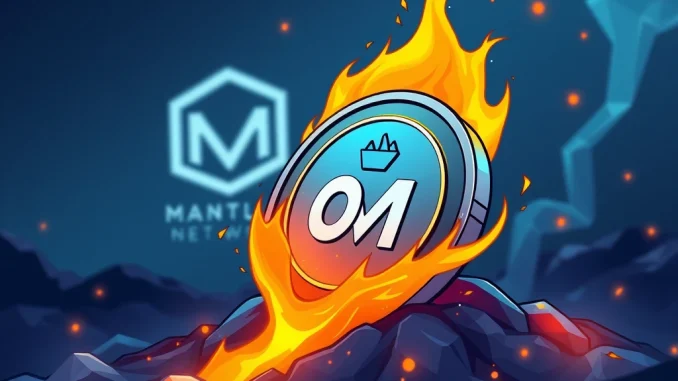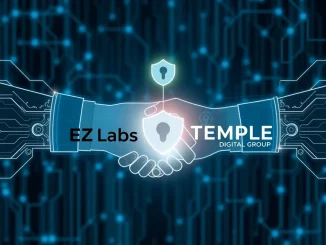
Attention, crypto community! A major event has just unfolded in the Mantle ecosystem that’s certainly worth discussing. The team behind Mantle Network has executed a substantial Mantle token burn, removing a significant portion of OM tokens from circulation. This move follows a prior announcement and has potentially interesting implications for the future of the network and the value of the OM token.
What Just Happened: A Massive Crypto Token Burn
According to reports, a total of 150 million OM tokens, valued at approximately $75 million at the time of the transaction, have been sent to a burn address. For those unfamiliar, a burn address is a cryptocurrency wallet address that cannot be accessed or controlled by anyone, effectively removing the tokens sent there from the total supply permanently.
This action is not entirely unexpected. It comes after Mantle’s announcement on April 21, indicating their intention to burn tokens specifically from the team’s allocation. Burning tokens from a team allocation is often seen as a positive sign, demonstrating the team’s commitment to the project’s long-term health rather than holding or selling a large portion of the supply themselves.
Why Do Projects Do a Crypto Token Burn?
The concept of a crypto token burn is a common strategy in the blockchain space. But why do projects choose to do it? Here are a few key reasons:
- Supply Reduction: Burning tokens decreases the total number of tokens in existence.
- Increased Scarcity: With fewer tokens available, the remaining tokens become scarcer.
- Potential Value Impact: Reduced supply, assuming constant or increasing demand, can potentially lead to an increase in the token’s price. This is often a factor considered in discussions about the OM token price.
- Commitment Signal: Burning team or treasury tokens signals the project’s dedication to the ecosystem’s growth and alignment with community interests.
The Mantle Network and the Impact on OM Token Price
The Mantle Network is a rapidly evolving Layer 2 scaling solution for Ethereum. Its native token, OM (formerly BIT before the rebrand and merger), plays a crucial role in the ecosystem, used for governance, staking, and potentially gas fees in the future. Therefore, any significant action involving the OM token supply is highly relevant to network participants and investors.
This particular Mantle token burn, specifically targeting tokens from the team’s allocation, is a powerful statement. It reduces the potential overhang of tokens that could theoretically be sold by the team in the future. While the direct, immediate impact on the OM token price can be subject to market sentiment and broader crypto trends, the long-term effect of reduced supply is generally considered deflationary.
What Does This Mean for the Mantle Ecosystem?
This burn is more than just a number; it’s a strategic move within the broader Mantle Network development. It reinforces the project’s commitment to creating a robust and sustainable ecosystem. For holders and users of the network, it potentially signals a stronger alignment of interests between the core team and the community.
In the context of Blockchain news, significant token burns like this often attract attention because they represent a deliberate manipulation of tokenomics aimed at influencing the economic model of the project. It’s a tangible action that goes beyond whitepapers and roadmaps, directly affecting the circulating supply.
Conclusion: A Bold Step by Mantle
Mantle’s decision to burn 150 million OM tokens is a notable event in the crypto space. By removing a substantial portion of tokens from their team allocation, they’ve made a clear statement about their long-term vision and commitment to the Mantle Network. While the market will ultimately determine the long-term impact on the OM token price, this Mantle token burn is a significant development that enhances the scarcity of OM and reinforces confidence in the project’s dedication to its community and ecosystem.
Stay tuned for more updates as the Mantle Network continues to develop and implement its strategies.



